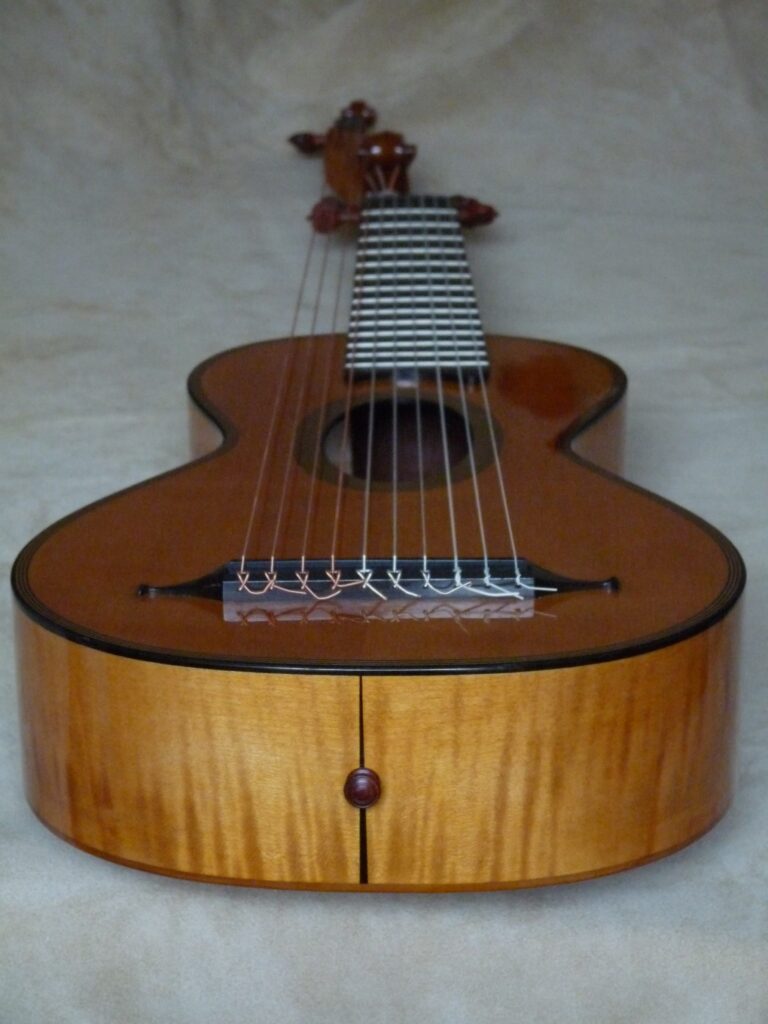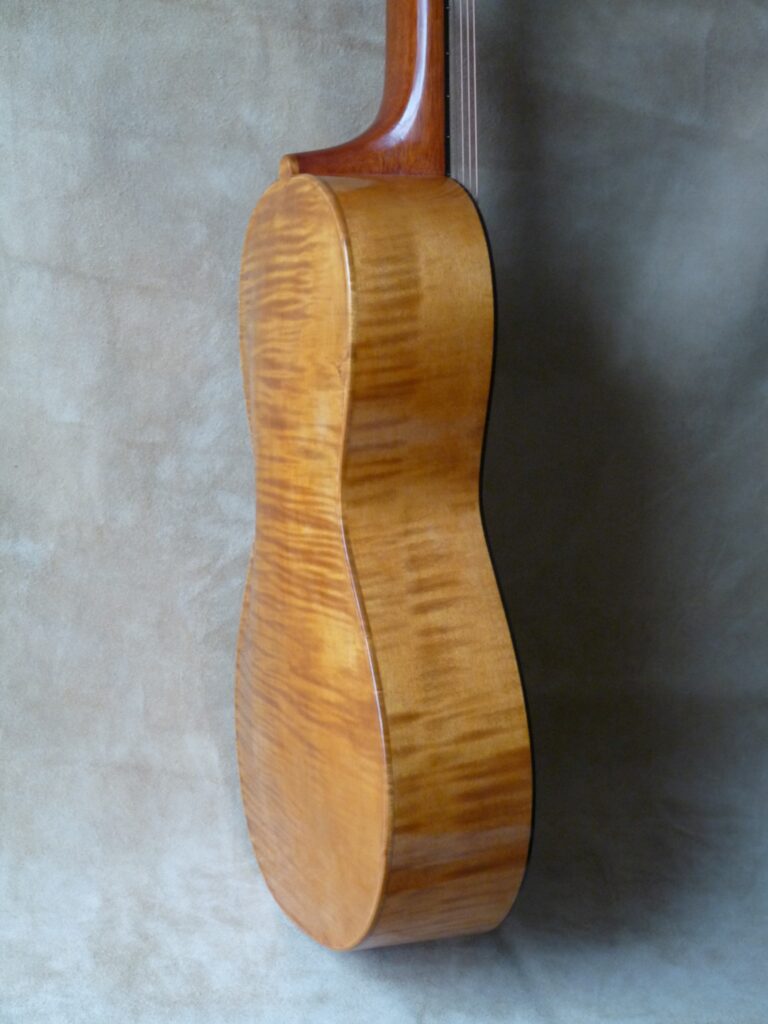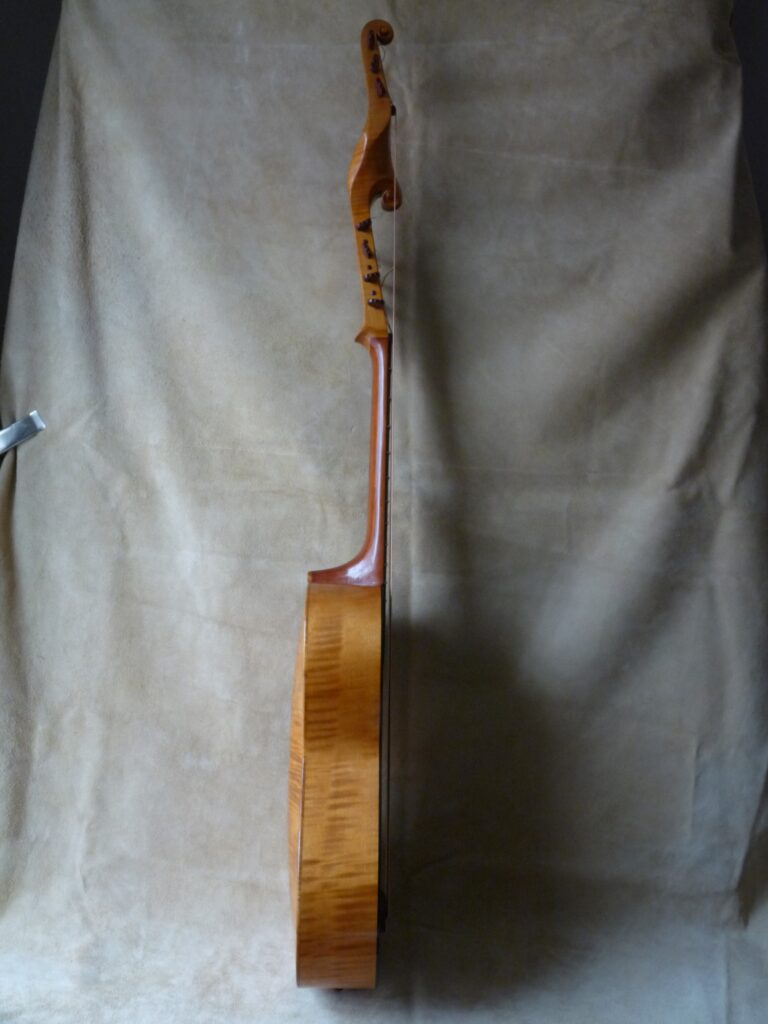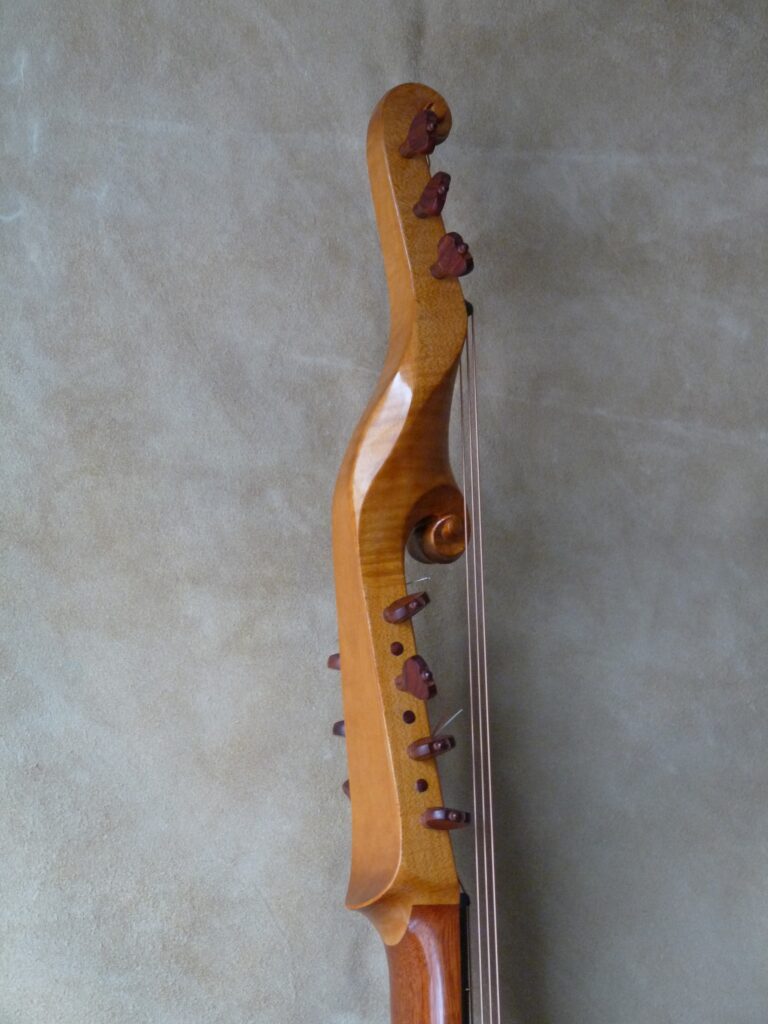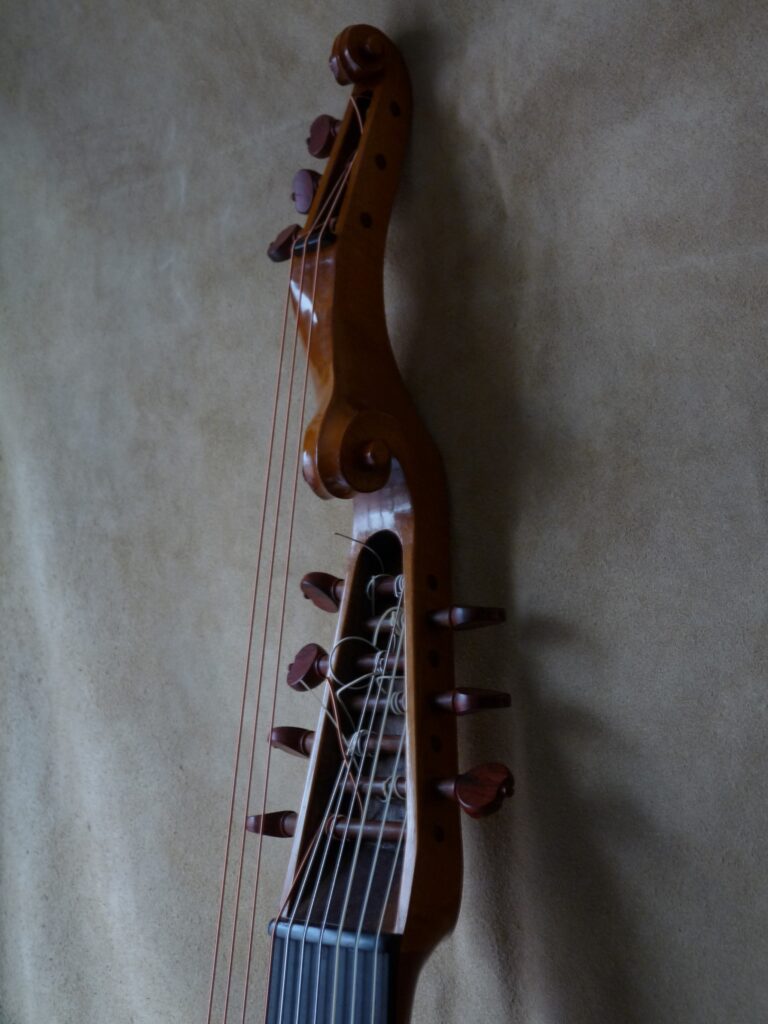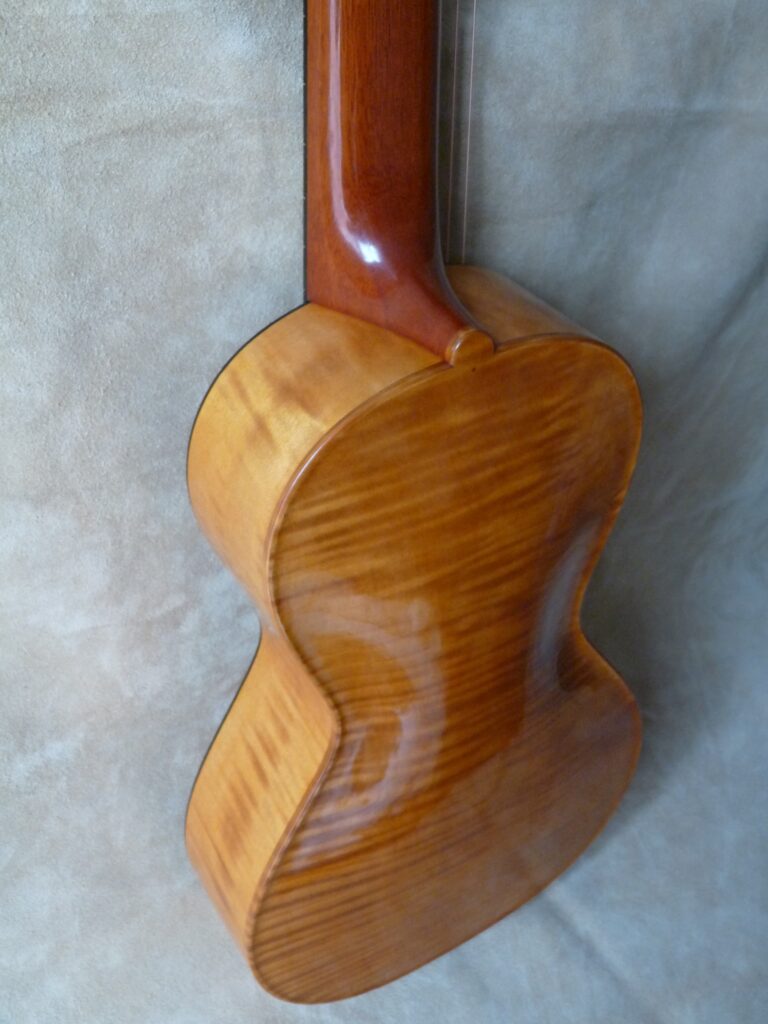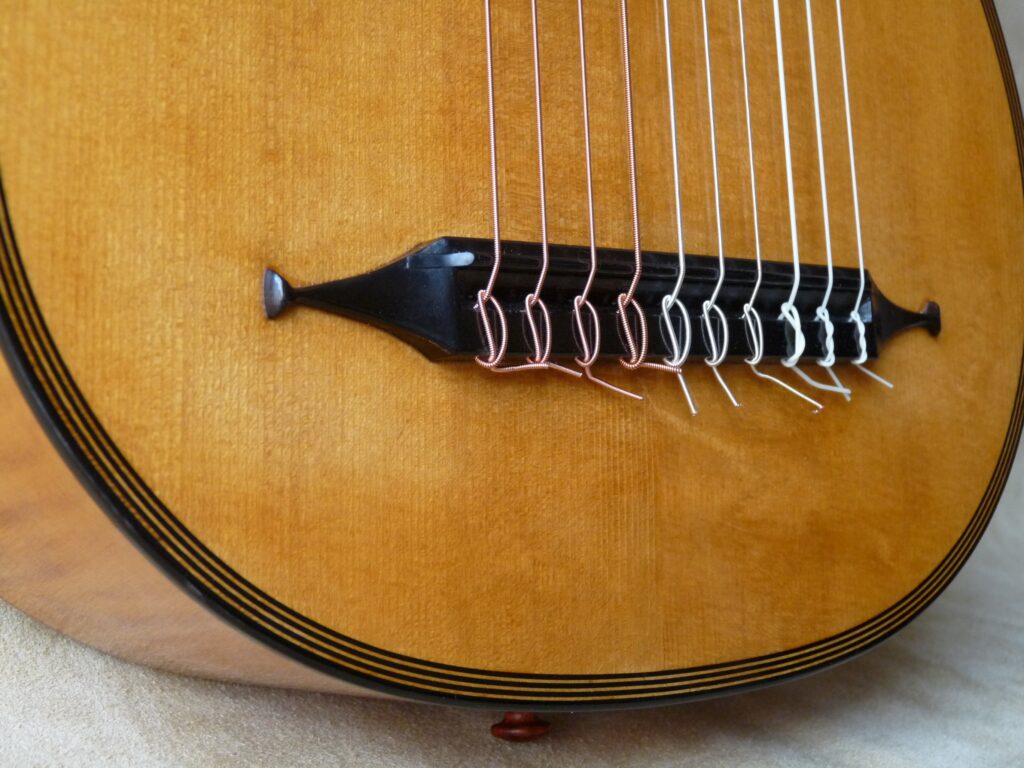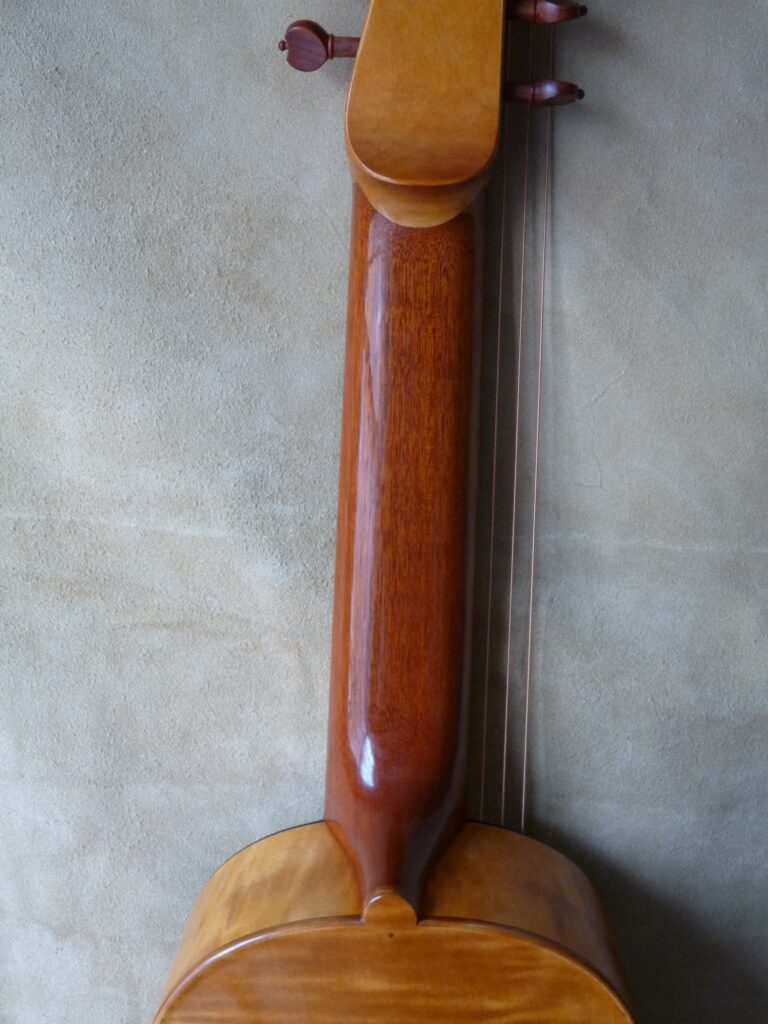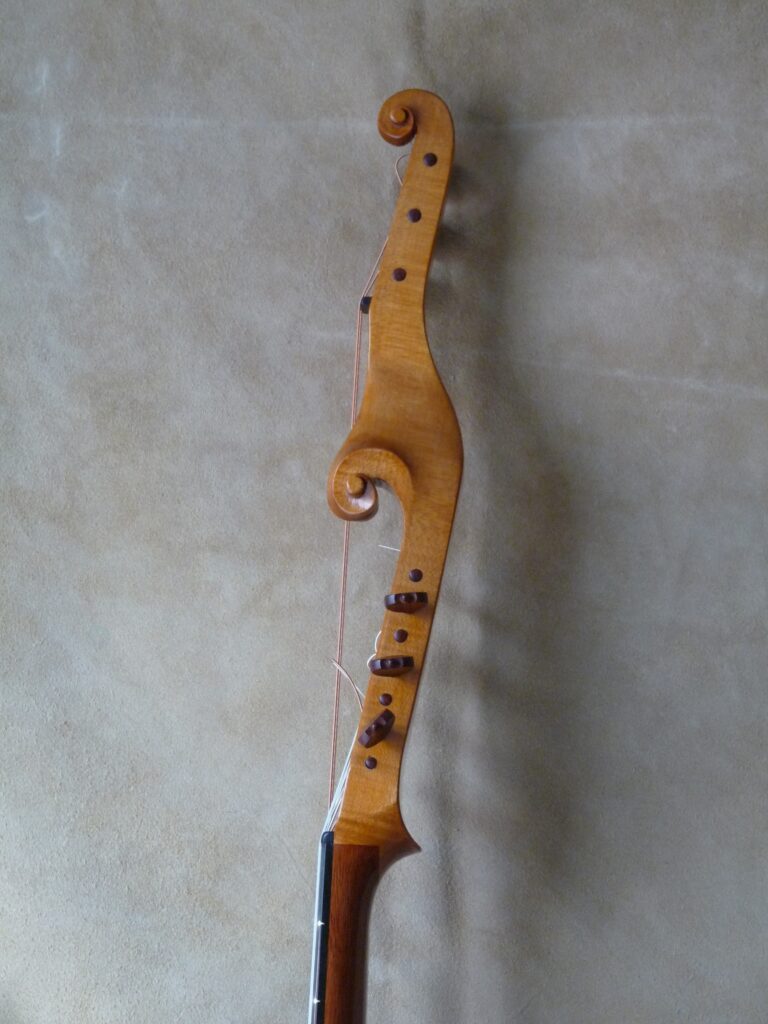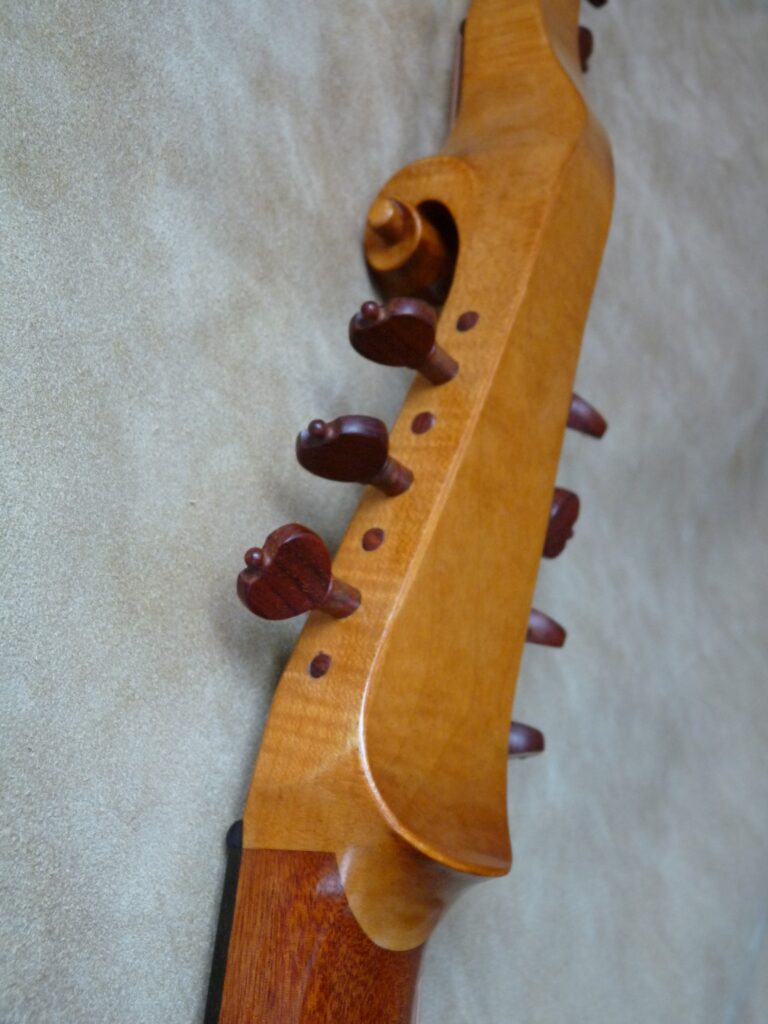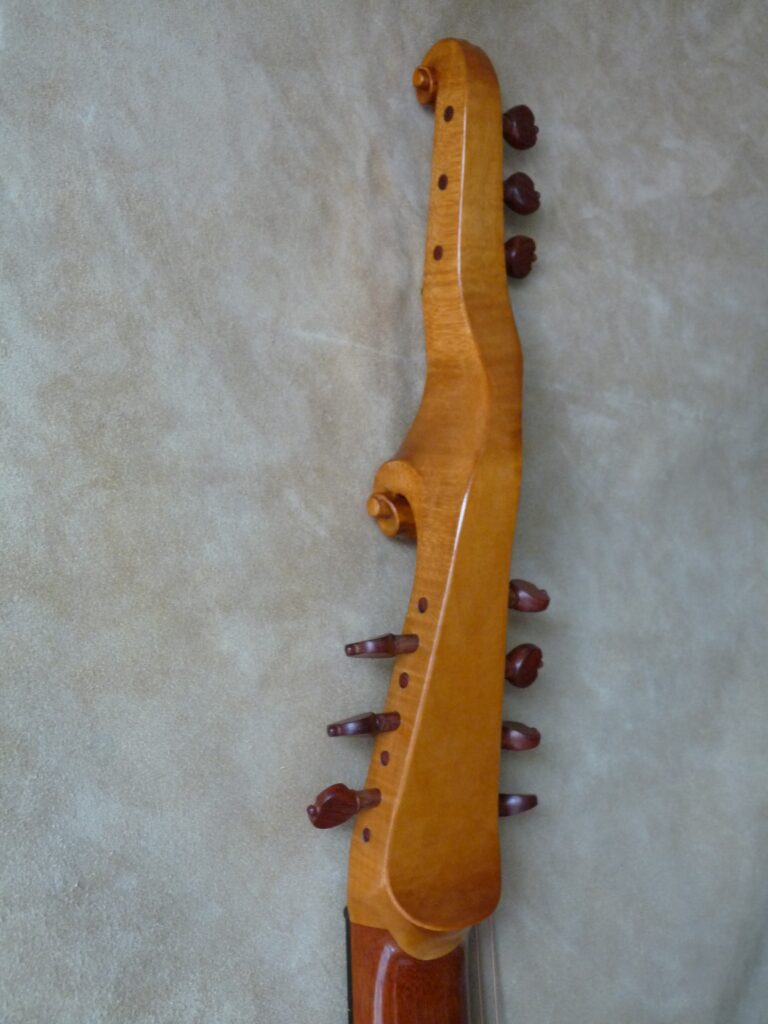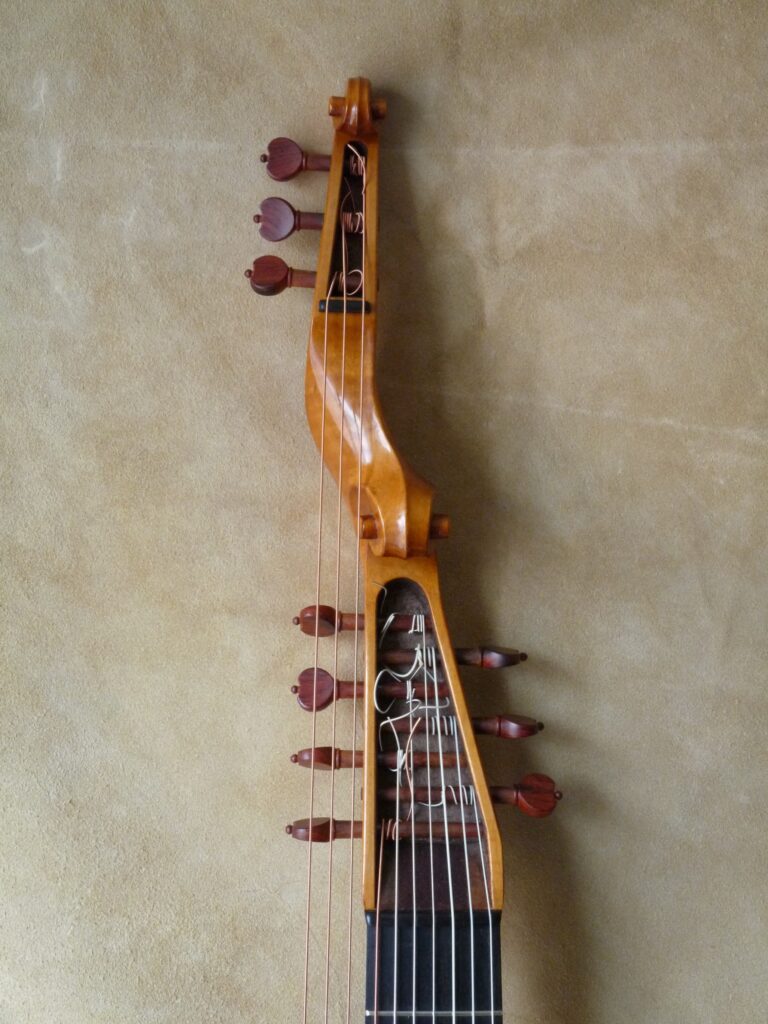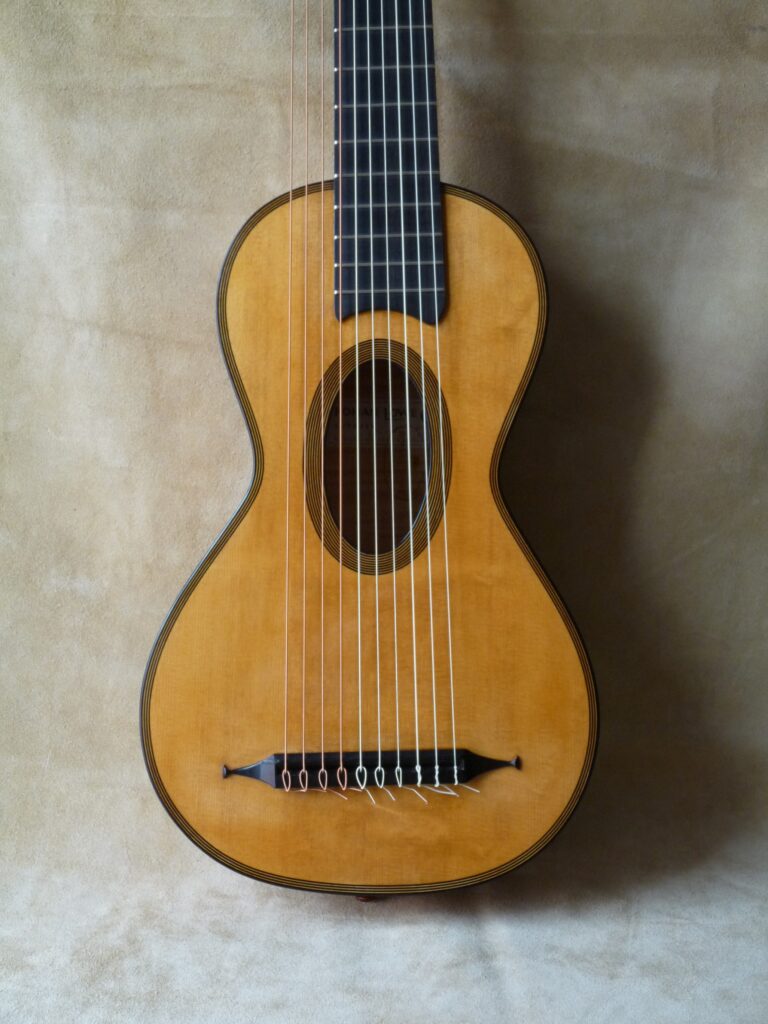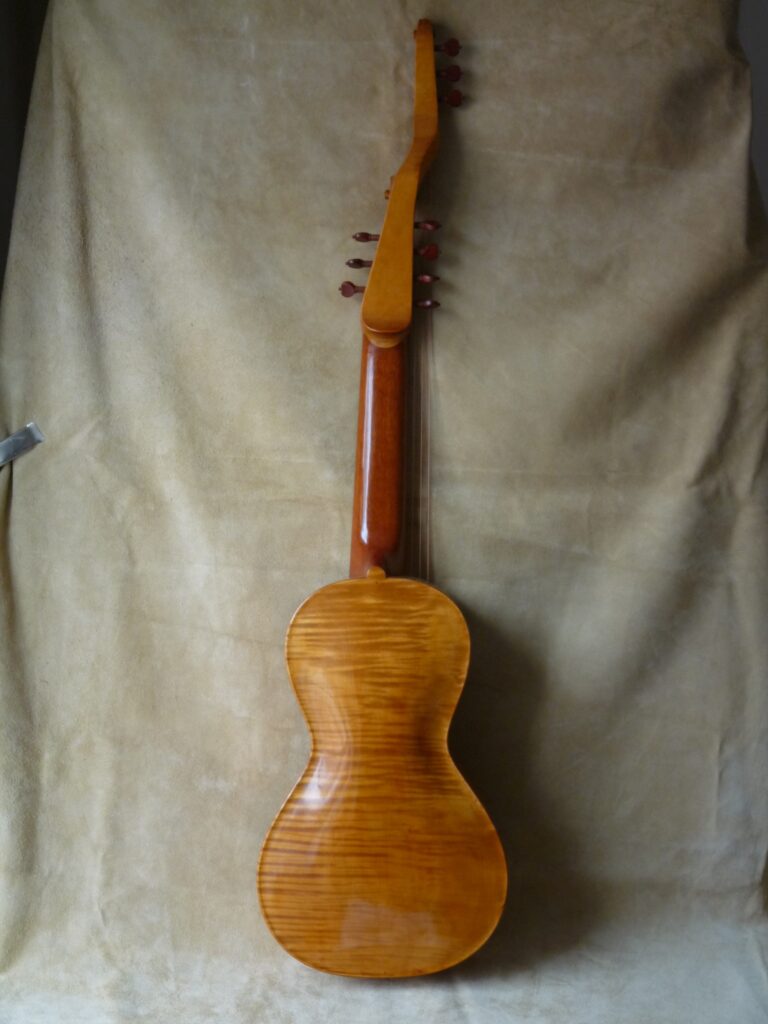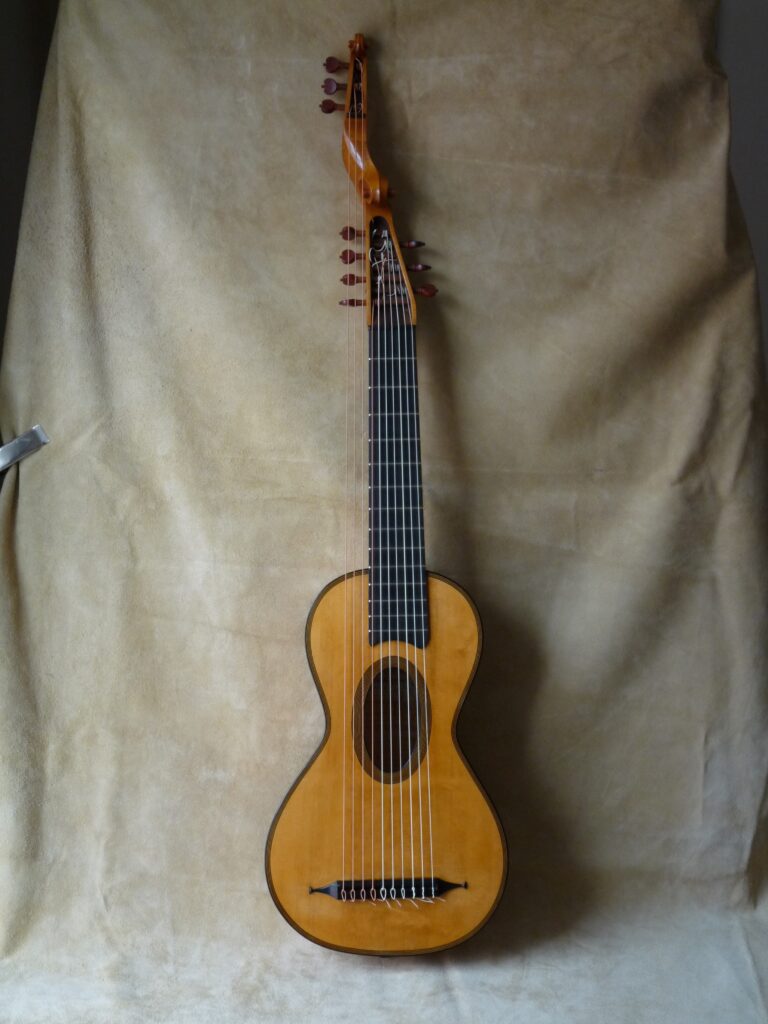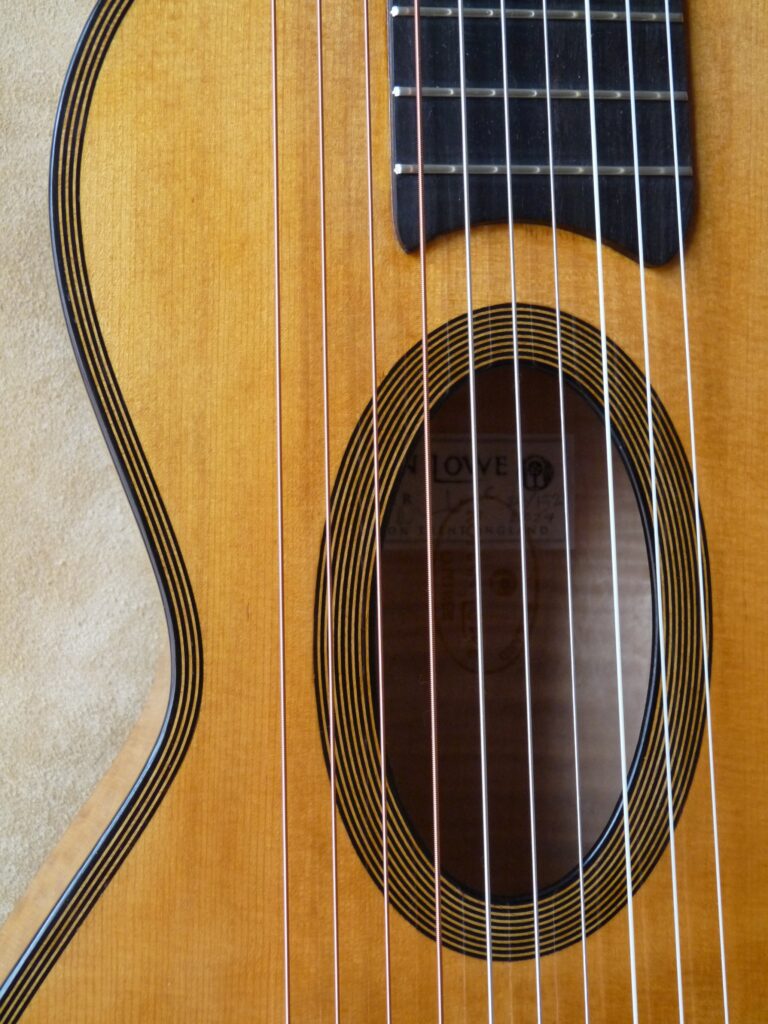
In the latter part of 2023, a few months after the completion of his 13 string baroque guitar-lute, Rob MacKillop contacted me again to ask if I would be interested in making another lute/guitar for him. He was very happy with the 13 string instrument and had the idea to create something in a similar vein ( but different) for renaissance lute repertoire. It would be single strung and tuned like a 10 course lute. Understandably, Rob wanted something that sounded different from the 13 course guitar, so a different body shape, timber and bracing style were called for.
I thought about possibilities. I have always loved a guitar by Etienne Laprevotte, the Parisian 19th century guitar and violin maker whose innovative design incorporates an elliptical sound hole to accommodate two long braces that run the length of the soundboard either side of it. The small body, using the 640mm string length and 10th fret neck joint that Rob wanted, would allow for a nice low lute-like bridge position, and it has a very elegant outline. It also has a solid carved back like violin family instruments. I had always wanted to make a copy of it. It certainly qualified in the ” different style” department, I thought. I suggested the idea to Rob and he immediately fell for the Laprevotte’s gorgeous looks. Using maple for the back and sides would also provide the kind of soft attack and tone that Rob was after. You can see the original guitar here: 1836 Etienne Laprevotte guitar
I didn’t have access to an original instrument ( which I did have for the Roudhloff body used in the 13 string), so I used the body measurements helpfully provided on the above web page and inferred the rest of the design from them using the photographs. Rob wanted the ribs deeper than the original, so I added a bit on without compromising the slim elegance of the original too much. Therefore the body is not a precise copy of the 1836 Laprevotte, but is close in style. I had already experimented with Laprevotte’s bracing ideas many years ago, and knowing that they work well, had no worries drawing my own bracing plan and applying it in this case.
I’ve been engaged in violin restoration for the last 5 years, and prior to that I’d built a couple of violins, so I was looking forward to making the carved back – hard work and time consuming, but very satisfying in outcome. For the neck, which needed to be offset and canted like the baroque guitar-lute, I chose Cuban mahogany, and the same English sycamore that I’d used in the 13 string for the carved head/pegbox. The head has the same concept as the 13 course guitar but differs in execution. Likewise the bridge – same concept – separate saddle and tie-block, as narrow as possible – but this time with straight terminations. I used plum for the bridge and stained it like ebony – Rob and I had both been thinking to use plum for the bridge at the same time. This kind of coincidental thinking happened several times during the making of these guitar-lutes.
Choice of strings was down to Rob, since my own stringing experience is in guitar rather than the lute. So it was strung with a set of Aquila Ambra 800 guitar strings for the trebles with copper wound lute strings for the basses.
To hear what it sounds like visit the Audio/Video page on this site or go to Rob’s YouTube channel
Rob has written some lines about the repertoire for his 13 and 10 string guitar-lutes, which you can read on his own website here.
Once again, thank you to Rob MacKillop for asking me to make these fantasy guitar-lutes for him. It has been a rewarding experience.
